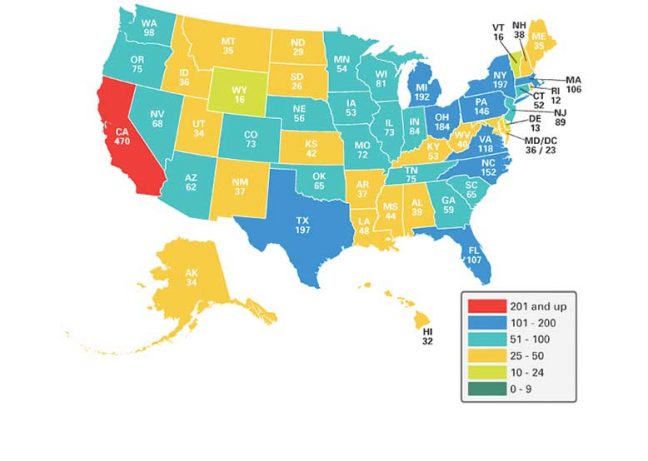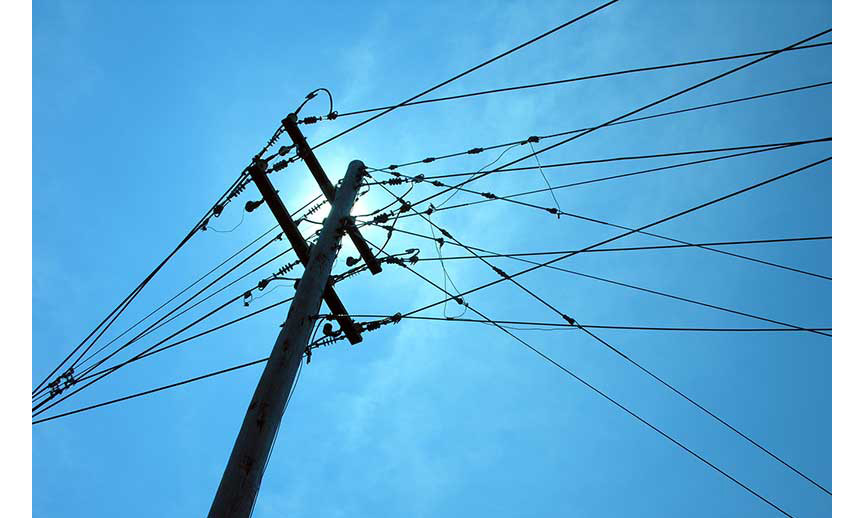by John Lerch/ director of sales, Axiom Energy
No matter how reliable and resilient our electrical grid is, the power will go out from time to time. While immediately our minds are brought to the severe outages caused by natural disasters, even outages lasting a few hours long can result in significant losses for some industries. For example, one minor power outage can cost hundreds of thousands of dollars from the loss of perishable inventory for grocery stores and other cold storage facilities. And the short duration power outages are by far the most common.
Power outages grow more frequent
In its most recent report, the Eaton Blackout Tracker reveals that 4,000 blackouts in 2016 caused problems for roughly 17 million utility customers across all 50 states. While the average blackout lasts 45 minutes, according to the report, if you add all the time together, it equals 130 days. This is a 45 percent increase from 2008.
Geographically, the top six states for outages were California, Texas, New York, Michigan, Ohio and North Carolina. While most outages were caused by bad weather—hurricanes, winter storms or rainfall—942 were caused by faulty equipment or human error, 483 were the result of vehicle accidents and 169 the action of animals. In all of these cases, it’s safe to assume that at least some supermarkets and cold storage facilities were forced to hustle to protect food merchandise from spoilage or throw it away and accept the losses.

The costs of spoilage
Foodsafety.gov recommends supermarket operators discard any perishable food (such as meat, poultry, fish, eggs and leftovers) that has been above 40°F for more than two hours. Further, most higher-end supermarkets often will dispose of “highly visible” and expensive inventory like red meat and seafood after the smallest power disruption to ensure public trust in quality and freshness.
The average grocery store stocks approximately $367,943 in perishable, refrigerated inventory. Larger, full-service or specialty supermarkets like Safeway and Whole Foods Market typically stock more than $900,000 in perishables.
Retailers often do not realize that their business interruption insurance policies do not cover all of the damages that occur from the result of a power outage. For example, if lightning were to strike utility equipment, or heavy snow were to damage a power line that is not located on insured grocery’s premises, there would be no coverage for spoilage of meat and frozen foods caused by the resulting power outage, even though the store had no control over this event. Thus, a special food spoilage coverage rider is required. Unfortunately, these policies typically have a 12- to 24-hour waiting period and are structured only to cover a total loss. Considering the majority of food spoilage occurs in the first three hours after a power outage, grocers can easily be left with high out-of-pocket costs they did not expect or budget for.
Patchwork of mitigation
In the past, grocery stores and other cold storage facilities were able to manage a patchwork of mitigation measures to maintain inventory during power outages, such as backup generators, portable refrigerated trailers or even packing freezer cases full of dry ice. However, the industry has struggled to develop an economically feasible and standard operating procedure to address the most common outages, which last less than three hours.
With advancements in energy storage technologies and the development of cloud computing and machine learning, supermarkets and cold storage facilities now have more options to ensure that if and when the power does go out, their refrigeration systems can continue operation without interruption. In many cases, these solutions can be implemented at little to no additional cost, with neither a requirement to modify existing facilities nor the purchase (or renting) expensive and difficult-to-permit backup generators.
The flexibility of thermal storage
An innovative approach gaining traction with supermarkets such as Whole Foods Market and Walmart features a method of storing “cooling” instead of electricity to power refrigeration loads. The stored “cooling,” or thermal energy, can be used both during outages and on a daily basis to offset peak electricity prices during the day. These systems work by leveraging the store’s excess refrigeration system capacity at night to freeze tanks of salt water when energy costs are lower. Then, when electricity prices soar during the afternoon, they “discharge” like any other battery, to provide cooling services for up to 10 hours. As a result, refrigeration systems can remain cool during power outages and stores can reduce their overall electricity demand on a daily basis, resulting in significant utility bill savings.
Using such a system to provide daily load-shifting and peak-shaving garners energy savings every day, in addition to backup power. These activities together can significantly improve a store’s bottom-line and resilience.
While Axiom focuses on the grocery store sector, thermal storage “ice batteries” seeing adoption are Viking Cold, Ice Energy and Calmac.
Refrigeration represents up to 55 percent of an average supermarket’s electricity consumption and research shows that by shifting electricity demand to off-peak hours, building owners can take advantage of lower nighttime rates to reduce a store’s expensive on-peak electricity demand by up to 40 percent. Similarly, savings from energy bill management and participation in utility demand response programs can offset up to 100 percent or more of the cost of a back-up cooling policy.
Despite global weather predictions of larger and more intense storms in the coming years, coupled with our nation’s aging utility infrastructure, grocery stores and cold storage facilities are still contending with costly and unexpected power outages on their own. By using electricity more efficiently and storing “cooling” off-peak, as well as providing economical backup power to refrigeration systems, thermal energy storage offers an innovative new solution to help grocery stores save money on energy and protect them from the average power outage.
No longer should companies resign themselves to incurring losses of perishable merchandise as a “cost of doing business.” Instead, no-cost, easy-to-install thermal energy storage technology can be employed to optimize energy savings day after day, while also making stores more resilient during those critical times when they would normally be left in the dark.
As director of sales for Axiom Energy, John Lerch is responsible for growing the company’s orders and pipeline by executing contracts and developing related sales materials. Lerch recently joined Axiom Exergy with more than 10 years of experience in the energy sector. He recently ran his own energy consulting practice that helped small to medium enterprises with business plans, sales and marketing strategies, and collateral creation. Prior to that, Lerch spent eight years with GE in various sales and marketing roles, including leading a global sales and marketing team for a distributed power generation product. He is a graduate of GE’s Experienced Commercial Leadership Program and has lived in cities all over the U.S. He is a graduate of UC Berkeley with a BA in economics and a BS in Conservation & Resource Studies with an emphasis on energy and sustainable development.
Keep reading:
https://www.theshelbyreport.com/2018/02/19/hr-benefits-risky-employment-practices/
Dumac Combines Restaurant, Grocery POS Capabilities In One System
https://www.theshelbyreport.com/2018/02/12/bread-baking-e-learning-program/

